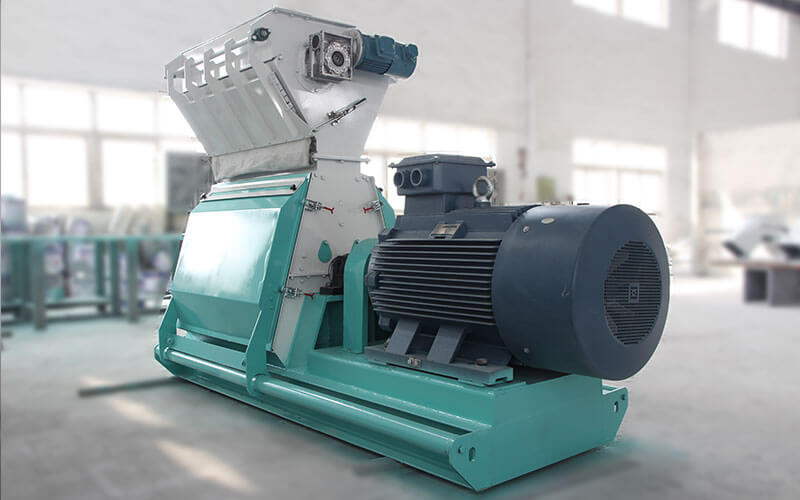In today’s fast-paced manufacturing and processing environment, efficiency, durability, and versatility are essential. These criteria apply not only to final products but also to the machinery that helps produce them. One such essential machine is the hammer mill, a time-tested piece of equipment that has remained relevant despite the rise of high-tech alternatives. But what exactly makes hammer mills a crucial tool across a variety of industries? Let’s explore the depth of their significance, the reasons behind their wide usage, and the latest trends shaping their future.
Understanding the Basics: What Is a Hammer Mill?
According to a Hammer Mill Market report, the industry is expected to grow significantly in the coming years.
A hammer mill is a mechanical device used for grinding, crushing, or pulverizing materials into smaller pieces through repeated blows of hammers. The machine typically consists of a rotating shaft fitted with free-swinging hammers, surrounded by a screen that controls the final particle size. Hammer mills are commonly used in sectors such as agriculture, pharmaceuticals, food processing, mineral processing, and recycling, where material reduction is a critical step.
Why Is the Demand for Hammer Mills Rising?
The growing demand for efficient material size reduction is a major driver of the hammer mill market. In industries like agriculture and animal feed, for example, hammer mills are used to grind grains into fine powders to increase digestibility. In the pharmaceutical industry, they ensure precise particle sizing, which is critical for drug efficacy and safety. Furthermore, environmental concerns have fueled the demand for hammer mills in recycling operations, where they help break down electronic waste, plastics, and other materials for repurposing.
As industries become more focused on sustainability, waste reduction, and energy efficiency, the role of hammer mills has evolved to meet these changing requirements. Their ability to process a wide range of materials while minimizing waste makes them a practical and eco-friendly choice.
How Are Technological Advancements Shaping Hammer Mill Design?
Modern hammer mills are a far cry from their early predecessors. Today’s models feature advanced engineering that improves performance, reliability, and user control. Variable speed drives, automated controls, and energy-efficient motors are now commonly integrated into hammer mills. These technological advancements not only improve productivity but also allow operators to customize the grinding process according to the material and required specifications.
Noise reduction and dust control are also gaining attention. With stricter environmental and workplace safety regulations in place, manufacturers are focusing on innovations that reduce emissions and noise pollution. Enclosed systems, better filtration units, and soundproofing technologies are increasingly being incorporated into newer models.
What Are the Key Applications Driving Market Growth?
-
Agriculture and Animal Feed: Hammer mills are extensively used for crushing and grinding cereals, corn, and soy to produce animal feed. This ensures better nutrient absorption and animal growth rates, especially in poultry and livestock farming.
-
Food Processing: In this industry, hammer mills help achieve consistent textures and flavors in spices, sugar, flour, and other food items. They also play a role in breaking down food waste for composting or bioenergy production.
-
Pharmaceuticals: Precision is crucial here. Hammer mills provide uniform particle sizes, a requirement for manufacturing safe and effective medications.
-
Minerals and Mining: These machines are used to break down rocks, minerals, and ores for further processing, especially in gold and coal mining operations.
-
Recycling and Waste Management: With rising awareness about environmental sustainability, hammer mills are being adopted to recycle plastic, metal scraps, and electronic waste.
What Challenges Could Impact the Hammer Mill Market?
Despite their usefulness, hammer mills do face certain challenges. One major concern is the wear and tear of components. Given their high-impact nature, hammers and screens must be replaced regularly, which adds to maintenance costs. Moreover, if not properly managed, dust and noise emissions can lead to regulatory fines or pose health risks to workers.
Another hurdle is the initial investment cost. While hammer mills are generally affordable compared to some high-tech alternatives, small-scale operators or startups might find the upfront cost a barrier. This is particularly true in developing regions where capital access can be limited.
Lastly, there’s a growing need for energy efficiency. Traditional hammer mills can be energy-intensive, which is at odds with today’s push toward greener technologies. Manufacturers are under pressure to innovate and deliver more energy-efficient machines without compromising performance.
What Does the Future Hold for the Hammer Mill Industry?
The global hammer mill market is on a positive growth trajectory. With increasing industrialization, especially in developing regions like Asia-Pacific and Africa, the demand for robust and reliable grinding equipment is expanding. Urbanization and agricultural modernization further contribute to market growth.
In the near future, smart hammer mills equipped with IoT capabilities may become the norm. These machines would offer real-time performance tracking, predictive maintenance alerts, and remote operation features—greatly enhancing productivity and minimizing downtime. Integration with renewable energy sources such as solar-powered motors is also expected to become more mainstream, further pushing sustainability goals.
Furthermore, customization and modularity are emerging trends. Users now seek machines tailored to specific materials and operational environments. Manufacturers are responding by offering modular designs that can be easily adapted or upgraded to meet changing needs.
Final Thoughts: Are Hammer Mills Still Relevant?
In an era driven by high-tech innovations and automation, the hammer mill may seem like an old-school tool. But its consistent performance, versatility, and adaptability have cemented its place in modern industrial processing. From agriculture to recycling, and pharmaceuticals to mining, hammer mills continue to play a pivotal role.
With continuous improvements in efficiency, sustainability, and integration with digital technologies, hammer mills are not just surviving—they are thriving. As industries continue to demand more versatile and efficient material processing solutions, the humble hammer mill proves that sometimes, the classic designs endure because they work.

Leave a Reply